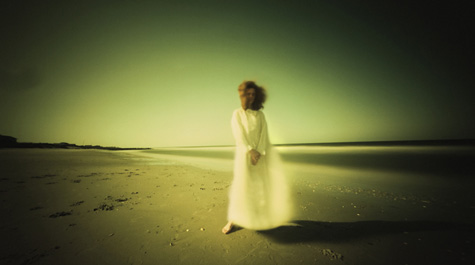Forward & back: Alumna finds new interpretations through old methods
The following story originally appeared in the fall 2019 issue of the W&M Alumni Magazine. - Ed.
Willie Anne Wright ’45 discovered pinhole photography by chance. Or perhaps it was fate. When she and her late husband, Jack, moved into the Queen Anne-style brick row house in Richmond’s historic Fan District in 1972, she was already an acclaimed artist who had completed a master’s degree in painting and she wanted to learn how to photograph her work.
Since we moved to this house and it was convenient to Virginia Commonwealth University, I thought I would see if I could take a summer class and learn how to use my new 35 mm camera that my husband had given me for my birthday — never knowing anything about pinhole photography. Never heard of it.”
{{youtube:medium:left|tzcOZ9Z1QwI, Willie Anne Wright '45 recounts her discovery of pinhole photography and the influence it had on her career in the art world.}}
The first assignment took her by surprise: Make your own camera, using a provided pattern. It was a complex process that took about two weeks.
“Everything had to be put together exactly because you couldn’t have any light leaks and it was a rather involved design,” she says. With that task completed, the class put photo paper in the cameras and went outside. Wright and a partner, Jane Ware, took pictures of each other.
“Then we came back in the darkroom and developed it, and I could not believe it,” she says. “I’ve still got that first one I did. It was just like magic.” The long exposure, perspective, angles and light resulted in images with an unpredictable quality that intrigued her. Wright had been working on a series of paintings based on 19th-century albumen prints of young people on a picnic, but she wasn’t happy with them.
“I tried to capture that feeling of looking backward,” she says. “Everything I had done before was pop art.”
When she saw the wistful image of Ware lying in the grass, head propped up, emerge from the developer, Wright knew she had found a way to realize her ideas.
Read the full story and see additional images on the W&M Alumni Magazine website.
 Skip to main content
Skip to main content

